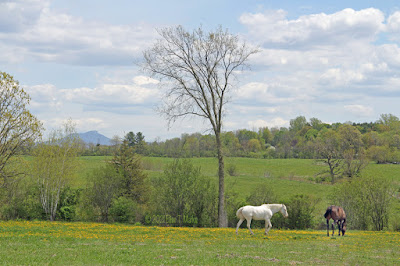Some Mushrooms Are Rather Fancy, like this one with a knobbed cap, wine colored gills, and a blue glow at the base of the stem.
Velvet Shank Mushrooms Cluster On A Tree Trunk
Edible
Velvet Shank Mushrooms Cluster On A Tree Trunk
Phaeolus schweinitzii, also known as velvet-top fungus, dyer's mazegill, or pine dye polypore, is a fungal plant pathogen that causes butt rot on conifers such as Douglas-fir, spruce, fir, hemlock, pine, and larch. It is a polypore, although unlike bracket fungi the fruiting body is often seen growing from the roots or base of the host tree. The fruiting bodies, appearing in late summer or fall, commonly incorporate blades of grass, twigs, or fallen pine needles as they grow. As it's name suggests, the dyer's polypore is an excellent natural source of green, yellow, gold, or brown dye, depending on the material dyed and the mordant used.
Chanterelle
Golden Chanterelle, Cantharellus cibarius
Identification: Cap yellow to orange, funnel-shape; gills shallow, yellow, blunt, and run down the yellow stalk. Season of fruiting: Summer-fall, Mycorrhizal with pine and upland hardwoods Edibility: Choice
The Cantharellus mushrooms are known worldwide as chantherelles and are some of the very best edible mushrooms. Chantherelles are always found growing from soil, unlike false chantherelles (Hygrophoropsis aurantiaca) that are found on woody debris. The Chanterelle is found and enjoyed by people all over the world. It has many names, pfifferling, girolle, gallinacci, in this country, it goes by the name chanterelle or occasionally by golden chanterelle.
This Mushroom looks like something out of a fairy garden. Found in Bolton, Vermont
Mushrooms Growing On A Mushroom
Silky Piggyback Mushrooms
Asterophora Parasitic
The scientific name, Strobilomyces floccopus, roughly translated, means "wooly mushroom that looks like a pine cone" The Old Man is prominently wooly and scaly, a mixture of black and white and gray, and, overall, rather unkempt. This edible bolete has white flesh showing between dark, large, shaggy, soft, flattened scales; Stalk slightly enlarged toward the base; grayish black; texture woolly, shaggy; solid. Partial veil grayish, sometimes leaving one or two woolly ring zones on the stalk. Preferably harvested young It’s taste is not regarded as great.
You pretty much need a microscopic test to tell the three types of Old Man apart and it makes no difference from a practical point of view. Strobilomyces is the most common & often has a distinct ring zone on the stem.
Stinkhorn Mushroom
Mutinus elegans, commonly known as the elegant stinkhorn, the dog stinkhorn, the headless stinkhorn, or the devil's dipstick, is a species of fungus in the Phallaceae family. The tip is covered with a foul-smelling slimy spore mass. Flies and other insects feed upon the slime which contains the spores, assisting in their dispersal.
Despite their repulsive smell, most species of stinkhorn mushrooms are not considered poisonous, and some varieties are edible in the egg stage. Some species are even considered delicacies in some parts of the world. However, even though no human deaths have been reported and associated with the consumption of these fungi, due to the lack of studies on the toxicity of stinkhorn mushrooms we cannot say that the consumption of these mushrooms is safe for humans, as well as which species are edible and which are not.
Since they are edible only in the egg stage, when they do not emit an unpleasant odor, this makes them hard to identify and they can be easily confused with other varieties of toxic mushrooms.
A Most Interesting Pattern On The Underside Of A Mushroom.
Indigo milk cap
The fruiting bodies of Climacodon septentrionalis are extremely durable and can last for many weeks. The mushroom is parasitic, causing a heartwood rot, and is especially fond of sugar maples and beech; it is frequently found growing from the wounds of these trees, high above the ground.
Ganoderma mushroom
Forage Only When Necessary:
Do Not over harvest wild foods. Foraging is fun, but remember that as a human, you have the ability to source your food in other places - wildlife does not. If you must forage for food, mushrooms, or herbs for an ailment, only harvest 10% -15% of what you see of any plant or patch you find, so it has a good chance to keep growing and come back next year. Remember that other lives depend on it. Also, mushrooms and fungi are essential to the health of the forest. As decomposers that effectively degrade structural compounds in wood and plant-derived cellulose, they create fertile soil and healthy forests.

































































